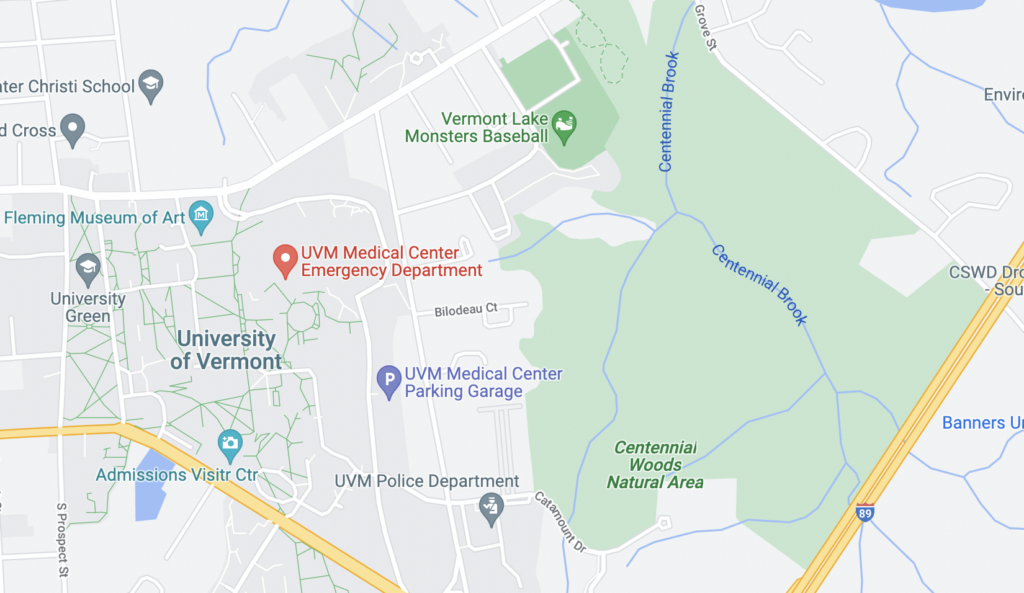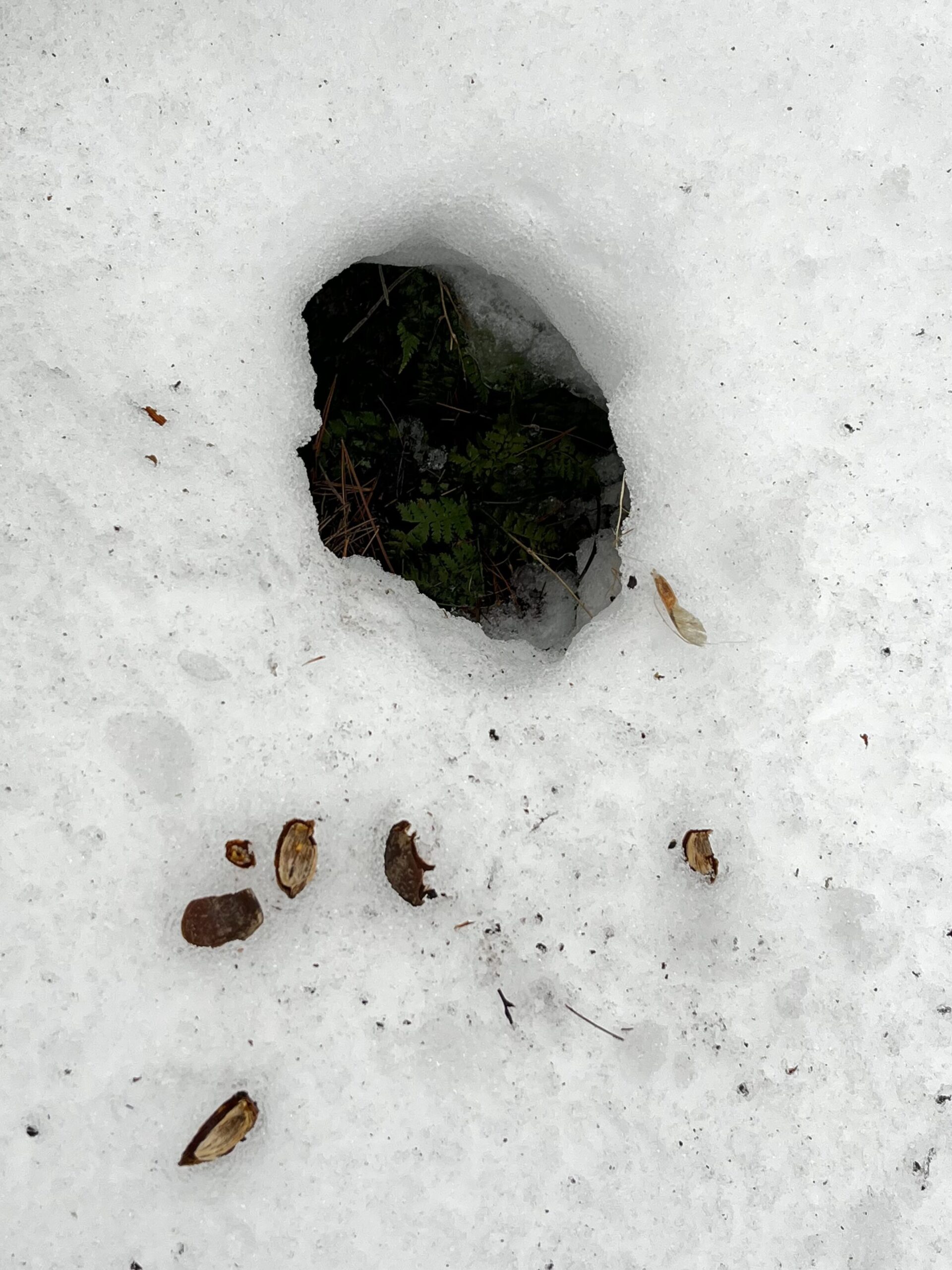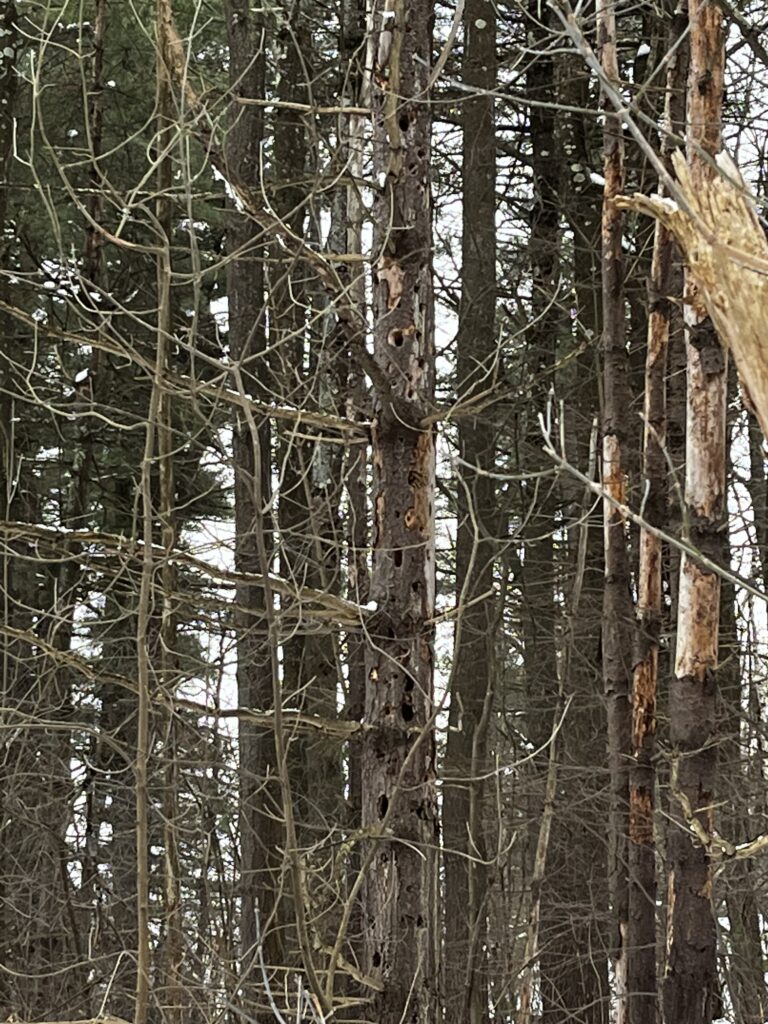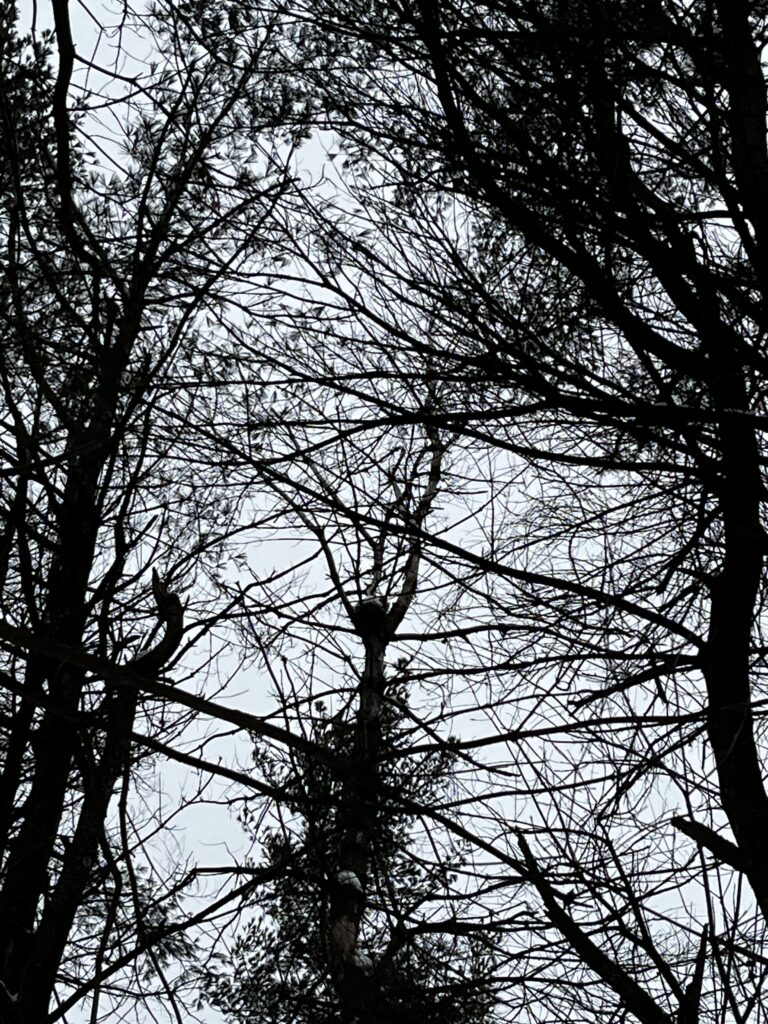While I’ll miss Winooski Gorge Park, it was a trek to get to and I felt more inclined to explore Centennial Woods since we learned about its natural history and current conservation efforts. It’s a quick walk from UVM’s central campus and there are a few trails to access the park. I’m excited to see the differences between my two phenology spots since Winooski Gorge had mostly cedars and pines while Centennial Woods seems to have a bit more deciduous trees and biodiversity in general.

As I set off on my walk to the Woods, I was expecting to find squirrel and rabbit tracks and perhaps some scat. I did not expect it to be so hard to find any signs of wildlife. The tracks that I had no problem finding at all were human boots and paw prints. I could imagine clearly an excited pup running around and sniffing any exposed trunks or shrubs while the owner held on for dear life.
Within the first 10 feet of entering the forest, I was already analyzing snow further from the path for tracks but found nothing obviously animal. I let myself wander deeper into the woods, closer to the creek where animals might go for a drink, and still found no tracks. My hopes were dwindling until a noticed a perfectly circular opening into the snow under a fallen tree trunk. It was quite a little home and evidence of the resident’s lunch was right on the doorstep. The nut – I wasn’t able to identify it – was likely broken open by a squirrel or chipmunk.

This was the only up close and personal evidence I could find, however, I did see some drilled holes in the tree on the left and a large bird’s nest in the middle of the photo on the right. These signs of bird activity are likely from the fall before most species migrated South. The abandoned forest was so quiet some of the only noises were the creaking of large trees in the wind and an occasional caw from a crow.

